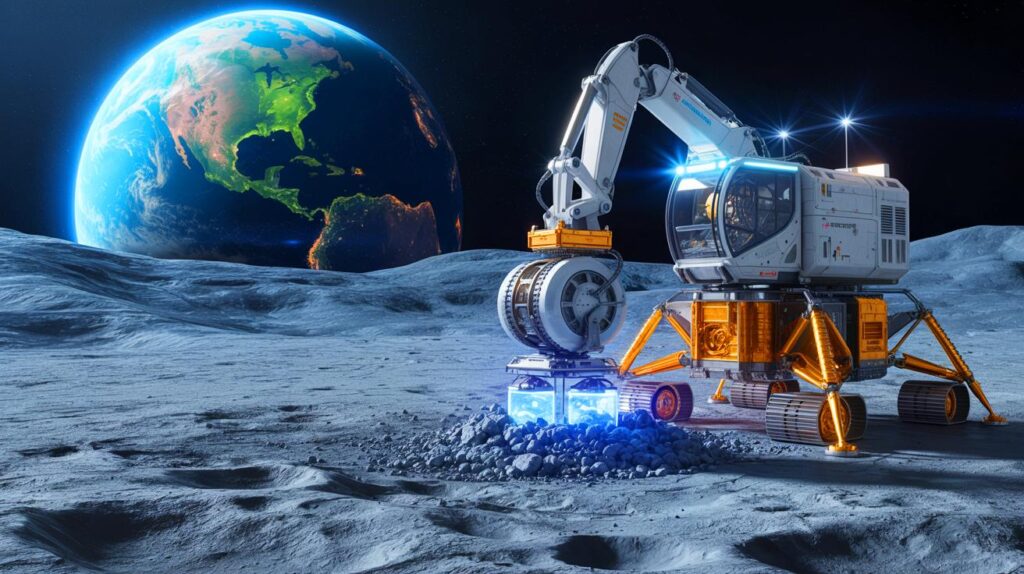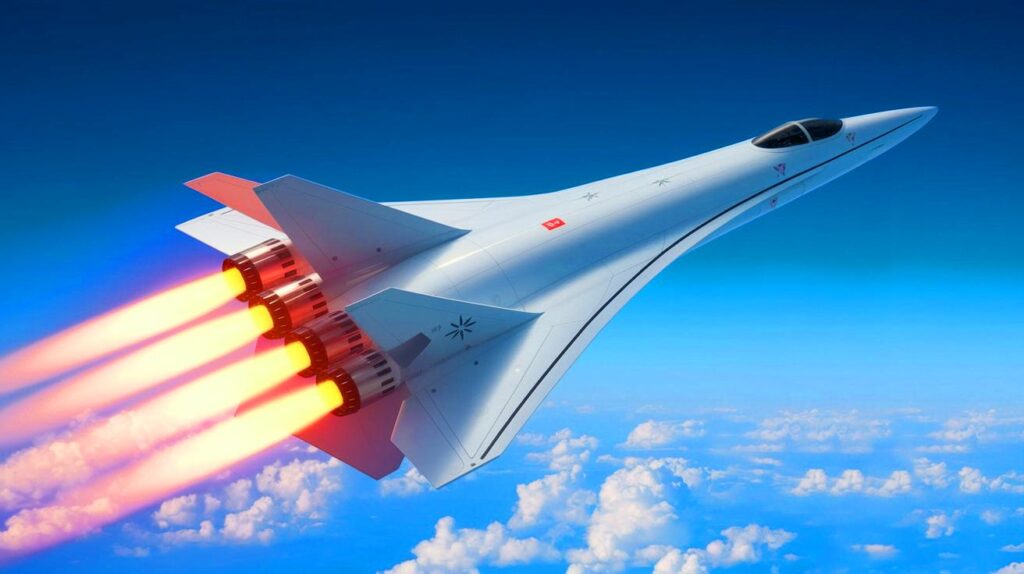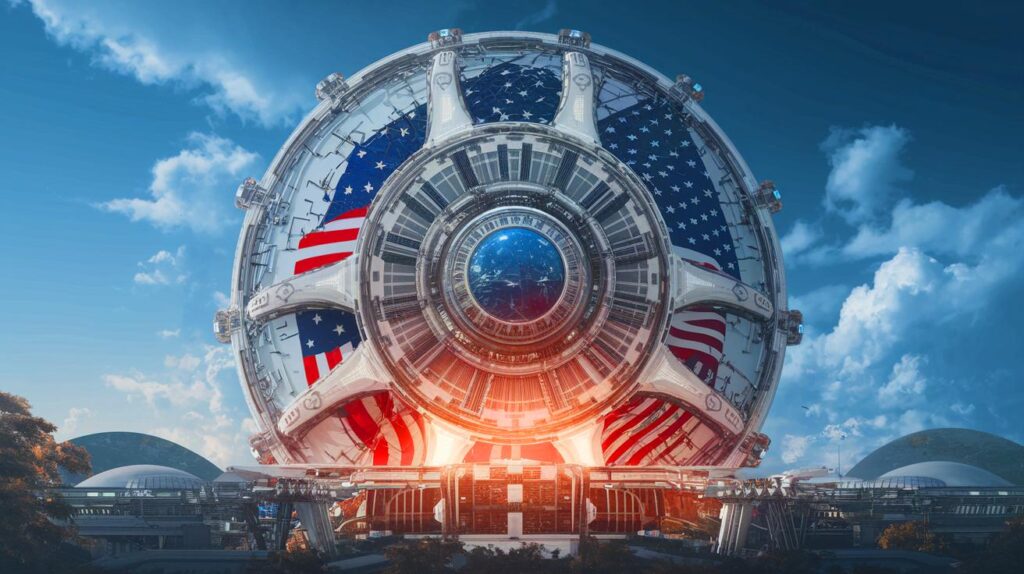| In Brief |
|
The pursuit of space resources takes a new turn with the extraction of helium-3 from the Moon. This gas, nearly nonexistent on Earth, could revolutionize the clean energy and quantum computing sectors. Interlune, an innovative company based in Seattle, has cracked the secret of this extraction and has already secured sales contracts. This initiative marks a significant advancement in lunar resource exploitation, paving the way for a cleaner and safer energy future.
The Mechanism of Interlune’s Lunar Excavator
Helium-3 is a non-radioactive isotope of helium, extremely rare on our planet. On the Moon, this gas has accumulated over millennia, embedding in the regolith due to solar winds. These winds continuously bombard the lunar surface, depositing this precious isotope, which can be found in higher concentrations below the surface. To capture this resource, Interlune has designed an excavator capable of digging up to three meters deep.
This impressive device processes up to 100 tons of regolith per hour, separating helium-3 from other gases through a chemical process adapted to lunar conditions. Developed in collaboration with Vermeer, an expert in industrial excavation equipment, this machine is currently undergoing tests on terrains simulating the lunar soil. Another major advantage is that only the extracted helium-3 will be returned to Earth, making the operation both practical and economical.
A Bright Technological Future Thanks to Helium-3
Helium-3 is generating significant interest as a potential fuel for advanced nuclear fusion reactors. Unlike current methods, its use would eliminate radioactive waste, offering a safer alternative. The gas also plays a crucial role in creating ultra-cold environments, essential for the development of quantum computers.
According to Corban Tillemann-Dick, CEO of Maybell Quantum, helium-3 is the key to multiplying quantum computers, increasing from a few hundred to thousands in the coming years. To reach these extreme temperatures, dilution refrigeration systems that utilize helium-3 are indispensable. Interlune’s plan to harvest this gas is structured in three phases, encompassing identification, site assessment, and large-scale extraction.
The Steps of Interlune’s Extraction Plan
Interlune has devised a three-phase plan to extract helium-3 from the Moon. The first step, Crescent Moon, scheduled for 2025, will send a hyperspectral camera to the lunar south pole to identify the most promising helium-3 areas. The second phase, Prospect Moon, will involve sending a lander to a selected site for measurement and testing extraction technologies.
Finally, the Harvest Moon mission, aimed to conclude by 2029, will demonstrate complete extraction capabilities on the Moon and the return of helium-3 to Earth. Despite the technical challenges to overcome, Interlune hopes to contribute to humanity’s dreams of clean energy and large-scale quantum computing.
The Economic and Ecological Implications
The cost of helium-3 is estimated at around 18.3 million euros per kilogram, a high investment that is justified by its potential for energy and technological transformation. The decision not to bring regolith back to Earth significantly reduces costs and the carbon footprint of the operation. This innovative approach could redefine the space economy, encouraging other companies to explore new methods of lunar resource exploitation.
Interlune is paving the way for a new era of exploration and use of space resources. The economic and ecological repercussions of these initiatives could be considerable, stimulating research and development of sustainable technologies. What will be the long-term impact of helium-3 exploitation on our planet and beyond?







